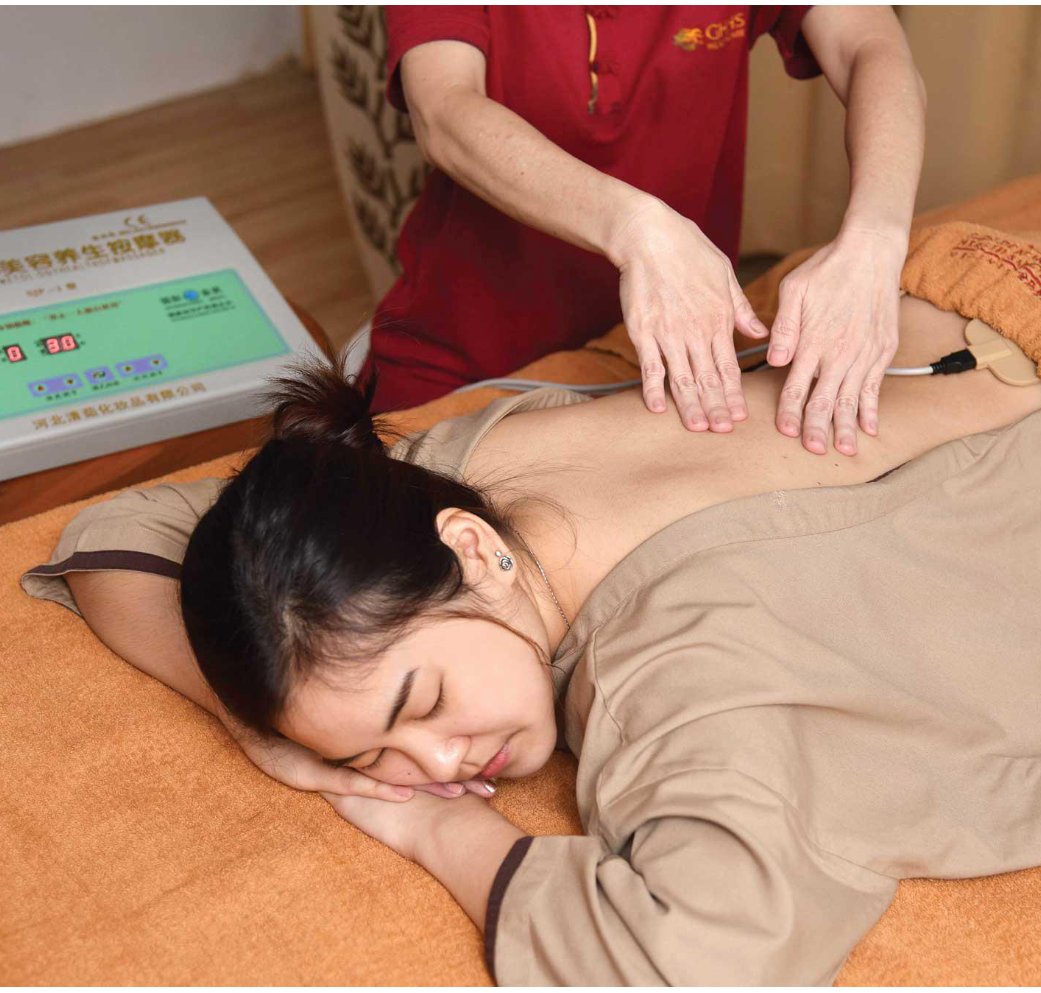Swedish

This massage style is gentle and relaxing with sweeping strokes, kneading, and tapping techniques that calm the nervous system and promote circulation. This is the most common form of massage that originated from the work of Pehr Henrik Ling, a physical education instructor with extensive knowledge in anatomy, physiology and gymnastics. His massage techniques were further adapted by Johann Georg Mezger, a Dutch physician who helped popularize it in the spa and wellness world. Studies reveal that Swedish calms the nervous system, induces release of endorphins, promotes oxygen delivery to soft tissue, increases the pliability of muscles and connective tissue, stimulates flow of lymph, can boost immune system activity and leads to improved sleep quality!
Deep Tissue

Deep tissue is tension focused and consists of slow strokes and deep pressure to produce physiological changes in the muscle fibers. Unlike Swedish, which aims to induce relaxation, DTM utilizes therapeutic touch and tools to break up adhesions, improve blood flow and restore function in a restricted area. Slow strokes are applied to stretch muscle fibers and pressure is applied through the hands, knuckles, elbows or with tools, to stimulate a repair response from the body. Stretching and muscle engagement techniques are commonly used to help re-establish proper mind muscle communication. Studies show that DTM can positively influence high BP, improve range of motion and decrease pain, most notably, cesarian, low back, and plantar fascia pain.
Trigger Point

TRP therapy is a soft tissue manipulation technique that helps release tense knots and restrictions in the muscle and surrounding fascia. Trigger point identification and mapping was pioneered by Dr.Janet Travell who observed mysterious pain patterns in patients over many years and determined sensitive sites within the muscle tissue were causing pain that travelled predictable pathways. Trigger points occur in contracted muscle fibers where metabolic waste gathers and blood flow diminishes. Pain can radiate or occur in seemingly unrelated areas. Release is achieved with sustained pressure applied to the trp site allowing the muscle to lengthen and ease strain on surrounding muscles and structures. This technique is often couples with hot and cold therapies.
Myofascial

Myofascial Release is achieved through gentle sustained pressure at the site of adhesion or density. These "holds" last for up to 5 minutes or until the fascial tissue relaxes and elongates creating space. Myofascial constrictions can produce pressures up to 2,000 pounds per square inch on surrounding structures. This technique is applied directly to the skin with no oil or lotion allowing the therapists to accuratley identify and enagage affected tissue. Myofascial release is very helpful for chronic pain conditions, pelvic pain, TMJ, headaches and migraines. An additional component in the work of John Barnes, a huge name in the fascia world- is "unwinding", in which the body moves independently, resetting the nervous system.
Bioelectric Therapy

Blepharo-lift

Integrative

TMJ Dysfunction

